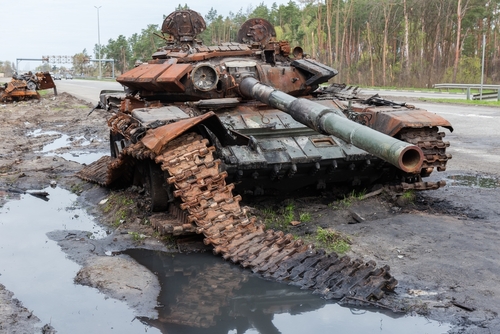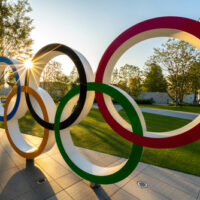Belgium (Brussels Morning Newspaper) If the aim of Putin’s invasion of Ukraine was to recreate the ‘Greater Russia’ of Soviet and Tsarist times, he lost his war before it began. An aspect of the conflict that has attracted little attention is the speed at which Russia is shrinking. It will never again have a superpower population and economic muscle, whatever happens to oil and gas prices.
President Vladimir Putin’s ‘Special Military Operation’ was not so much a land grab as a people grab. He evidently hoped to staunch the hemorrhaging of Russia’s manpower by adding some 40 million Ukrainians to the overall population under the Kremlin’s control, raising it from about 140 million to some 180 million.
NATO’s member governments have yet to make much of the fact that Russia can never regain its former superpower status. That’s probably because belittling the foe might threaten alliance members’ solidarity and commitment. There’s nevertheless a powerful geopolitical case for emphasizing the futility of Putin’s war. A key NATO aim should be to persuade global opinion of the pointlessness of accepting, let alone backing, an invasion that will never ‘make Russia great again’ while imposing heavy economic costs around the world.
Putin has never hidden the fact that depopulation is Russia’s greatest threat. Of all the major countries, it is hardest hit by low birth rates, ill health, and shorter lifespans. But instead of fixing this problem, the Ukraine invasion is exacerbating it. Emigration by draft dodgers and political dissidents, together with soaring battlefield deaths, are compounding Russia’s already dismal demographics.
Within weeks of last February’s failed lightning strike against the Kyiv government, an estimated 300,000 young Russians, many with advanced technical qualifications, left for Georgia, Turkey, and Scandinavian and Baltic states. A similar number reportedly left in a second wave after conscription measures were announced. Over the 20 years of Putin’s presidency, the nation’s Rosstat statistical service estimates that upwards of five million people have emigrated.
Russia’s demographic decline began long before that of Western Europe. Twenty-five million Russians died in World War 2, by far the highest toll paid by any country in the struggle against Nazi Germany. Their deaths dealt Russia a demographic body blow it is still suffering from. The dead were predominantly the young men and women of the Red Army, and their loss has had a snowballing impact on the birth rates of future generations.
Projections for Russia’s population size differ, with the most radical predicting a fall of almost a third by mid-century. This UN forecast sees the 145 million people recorded in 2000 reduced to 104 million by 2050. Less dramatically, the World Bank has seen mid-century Russia numbering 132 million people, while RANEPA, the National Economy and Public Administration in Moscow, reckons 128 million.
The US Census Bureau reported in 2003 that it expected the Russian population to dip to 118 million. In 1999 the late Murray Feshbach, a prominent American expert on Russia’s demography, even predicted its mid-21st-century population would slump to an astounding 80 million, calling the country a “sick and shrinking nation”.
The differences between these projections are chiefly explained by the variable factors that determine population shifts – in other words, births, and deaths. Russia records more abortions proportionately than any other nation. In Soviet days they were seen as a form of contraception, and still run at around two million yearly.
Fertility is in free fall, having declined from an average of 1.5 children per child-bearing woman in 2000 to 1.4 today, and is slated to keep on falling. Meanwhile, Russia has one of the highest mortality levels among developed countries, having risen over the last fifty years from nine deaths a year per thousand people to almost thirteen.
Even if, against the odds, Russia’s military ambitions were eventually successful, its diminishing workforce condemns it to economic stagnation and falling living standards. By 2030 there will be a quarter fewer 20-40 year-old workers than twenty years earlier, presaging dramatic fall-offs in Russia’s productivity and well-being.
Ukraine, too, is shrinking, but a quarter of its population is displaced internally or abroad as refugees intend to return, sooner or later. Russia’s outlook is very different. The focus of Journalists and policymakers on the armed conflict in Ukraine should widen to include its longer-term aspects. Telling Russians that Putin is condemning them to pariah status won’t quench their patriotism, but explaining the war’s fruitlessness might hasten a negotiated settlement.
Opinions expressed in the op-ed section are solely those of the individual author and do not represent the official stance of our newspaper. We believe in providing a platform for a wide range of voices and perspectives, even those that may challenge or differ from our own. As always, we remain committed to providing our readers with high-quality, fair, and balanced journalism. Thank you for your continued support.Sincerely, The Brussels Morning Team




